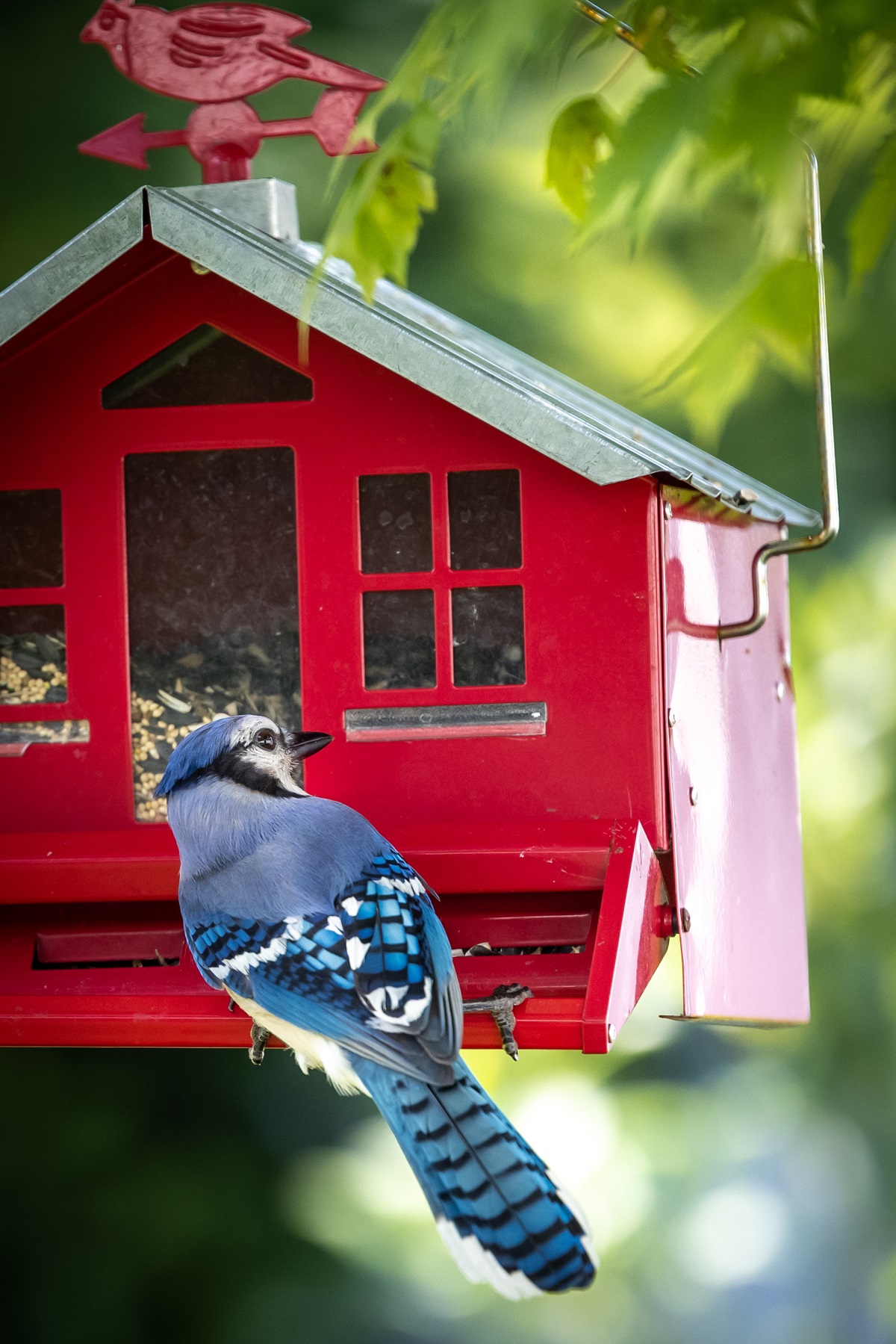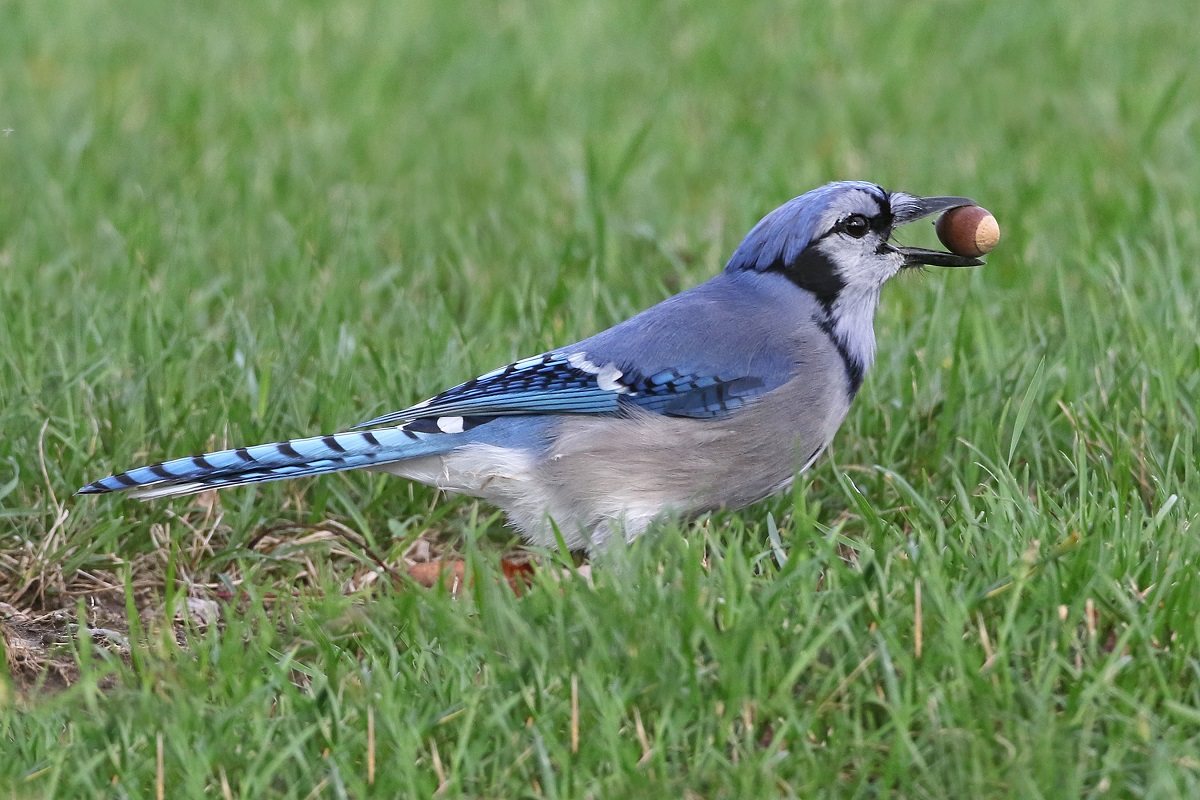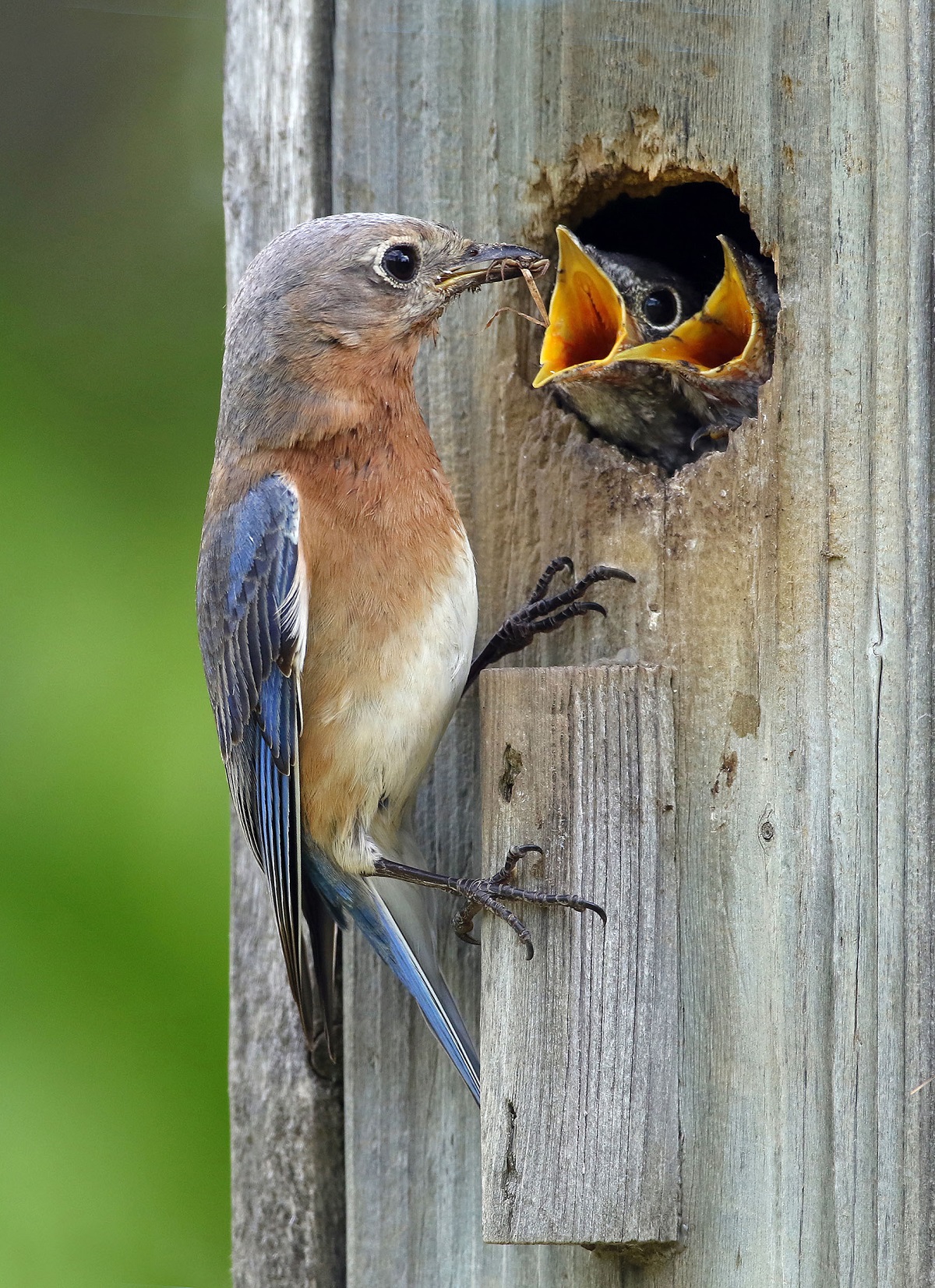By Brian Morin

Summer is prime time for birds when it comes to finding a meal. Dinner is served everywhere—on the ground, in the vegetation and in the air, because insects are in abundance. This rich source of protein, fats and vitamins is what enables young songbirds to explode in growth, going from helpless, naked, day-old chicks to nearly adult size in as little as 10 to 14 days. In three to four weeks, they will be completely on their own. It is one of nature’s miracles.
When it comes to eating what’s good for you, chicks do best with caterpillars of many kinds. The larval stage of insect development is easiest for them to consume. There are no hard surfaces for the body to break down, only raw protein that is quickly digested and transformed into body-building energy. It is also far easier for the parents to find insect caterpillars than to capture flying adults. Warblers, vireos and many other songbirds scour the vegetation looking for creepy crawlies. Once leaves develop, a virtual army of bugs appears and it gets easier for birds to take advantage of the bounty.

Of course, not all species feed this way. Flycatchers, swallows and whip-poor-wills take their meals in the air, grabbing adult flies, moths and other insects, including mosquitoes. Be thankful for that. While dragonflies are themselves predators, feeding on insects, they also become a significant meal for some birds. Surprisingly, that includes two of falcons, the American kestrel and the merlin. Both falcons will take small birds and mammals like voles, but the smaller dragonfly is still worth their energy to capture.
One of the best areas to watch the aerobatics of birds like swallows is over water. These birds swoop and dive for hours in search of flying insects, some of which have recently gone through the larval stage in the water and have emerged in flight. They fly with mouths agape as they home in on what we probably can’t even see, unless of course it is a swarm of thousands of annoying gnats. Marshes and fields are also excellent places to check.
Any rural setting with buildings, especially around farms, is a good area to look for the Eastern Phoebe. It usually builds a nest on a platform like a ledge, under the eaves of a barn, on an outdoor light or even under a bridge, as long as the nest site is covered. The closer to overhead cover the better. If a building has an opening, like a broken window or a door that is always left open, it won’t hesitate to set up shop inside.

The nice thing about this friendly species is that it will find a perch to watch for an insect flying by. It then swoops out to attempt to capture it, returning to yet another perch and repeating the action. Its characteristic call, phoebe, is how it got its name. Bluebirds also wait for their meals but they find them crawling on the ground.
Have you ever seen tent or webworm caterpillars? These hairy-looking crawlers that make many people cringe will change into moths after leaving their large web-like structures. They consume the leaves of adjacent trees and bushes then spin a cocoon, emerging as moths. Their protective hairs make them unpalatable to many songbirds but not to cuckoos, rose-breasted grosbeaks, cardinals, robins, blue jays and even wild turkeys. Birds that eat these critters will usually regurgitate the hairs.
Most birds are highly adaptive, adjusting their diet to whatever is on the menu this week. That means those same blue jays that dined on caterpillars can switch to eating seed and nuts such as acorns as the season advances and the waves of new insects start to wane. As the party winds down, it’s time to pack on extra ounces of fat and hit the road for the long trip ahead.
Nature’s harvest time is from August on. Many insects have already gone through their life cycle and plants are going to seed or producing fruit and nuts to continue life another year. Resident birds just roll with the changes but the majority move on over a period of several months. Migration is critical to their survival because life in Canada during the winter requires special adaptations and for many, essential food is in short supply or non-existent.
That’s where you come in. People that feed the birds provide an important supplement for nature’s larder. Feeders stocked with sunflower seeds, mixed seed and suet fill the gap when natural supplies are low. For now, that is not a concern but we all know what lies ahead as the inevitable changes brought on by advancing seasons bring a return to the lean months.






